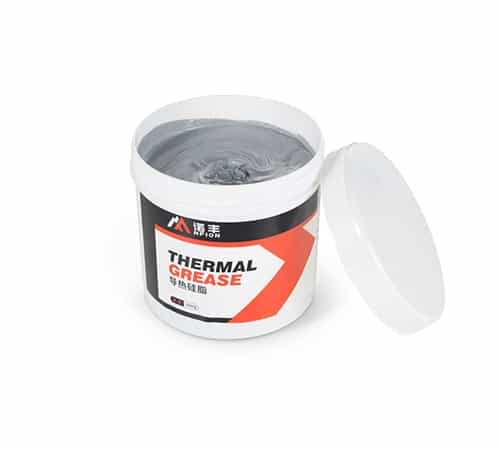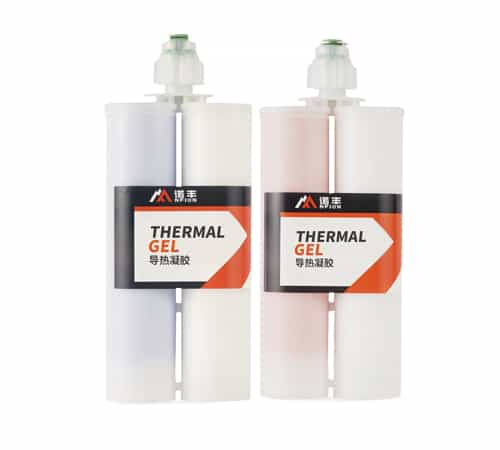
With the rapid development of the automotive industry, LED lights have become widely adopted as modern lighting equipment for automobiles. Owing to their efficiency, energy conservation, environmental friendliness, and long lifespan, LED lights have seen extensive promotion and application in the field of automotive lighting. However, LED lights generate heat during operation, which can negatively affect their lifespan and performance if not dissipated in a timely manner. Consequently, thermal management materials have become crucial in the context of automotive LED lighting.
Function: A thermal interface silicone pad is a flexible, high thermal conductivity, and electrically insulating thermally conductive material. It forms a tight and uniform contact between the LED chip or aluminum substrate and the heat sink, effectively filling microscopic gaps, reducing thermal resistance, and enhancing thermal conduction efficiency.
Advantages: Easy installation without curing process; possesses a certain degree of compressibility, accommodating component tolerance variations; offers good temperature resistance, weatherability, and electrical insulation, suitable for automotive environments.

Function: Thermal grease is a paste-like thermally conductive material with excellent wetting and flow properties, capable of filling extremely small gaps and providing a good thermal conduction path.
Advantages: Superior thermal performance, with controllable application thickness, particularly suitable for the cooling of small, high-density heat-generating components; exhibits strong adhesion to metal surfaces, resisting detachment.
Application: Appropriate for automotive LED light applications where space is compact and precise control over heat transfer paths is required, such as in certain types of headlight modules where LED chips are directly in contact with cooling fins or heat sinks.

Function: Essentially a lower-viscosity version of thermal grease, thermal gel has a semi-fluid consistency that enables it to better fill gaps between complex shapes or uneven surfaces.
Advantages: Like thermal grease, it boasts excellent thermal conductivity and wetting properties but exhibits superior thixotropy, maintaining stability even under gravity or vibration, preventing dripping or flowing.
Application: Suitable for automotive LED light designs with intricate internal structures and requirements for self-adaptive gap-filling capabilities, e.g., in precision optical components surrounding advanced headlight systems.

Function: Thermal adhesive tape combines both bonding and thermal conduction functions, enabling direct attachment and thermal connection of the LED aluminum substrate to the heat sink, simplifying assembly.
Advantages: Quick and easy installation without additional fasteners, contributing to reduced overall volume and weight; while having a relatively lower thermal conductivity, it suffices for some LED lighting applications with lower heat generation, such as interior lights or reading lamps.
Application: Commonly used in automotive interior lighting, signal lights, or other LED components with lower cooling demands, emphasizing lightweight and simplified installation.

Function: A graphite sheet is made from highly oriented pyrolytic graphite (HOPG), featuring an extremely high thermal conductivity and low thermal resistance, coupled with its own light weight and thin profile.
Advantages: The unique layered structure of graphite sheets enables efficient heat conduction in both horizontal and vertical directions, making them particularly suitable for applications requiring large surface area and rapid heat dissipation.
Application: In high-power, large-sized automotive LED lamps like headlights, graphite sheets can be employed between the aluminum substrate and the heat sink or for heat diffusion among multiple LED chips, ensuring even heat distribution and swift transfer to the cooling system.

Function: Thermally conductive plastics integrate structural components and thermal management, serving as LED lamp housings or brackets themselves, simultaneously providing support and participating directly in heat dissipation.
Advantages: Compared to traditional metallic materials, thermally conductive plastics are lighter, offer greater design flexibility, contributing to reduced vehicle weight, and simplify assembly steps and costs. Some thermally conductive plastics also feature flame retardancy, weather resistance, and static electricity resistance, meeting the stringent standards of the automotive industry.
Application: Appropriate for non-core heat dissipation components in automotive LED lights, such as lamp housings, brackets, or cooling fins, particularly in modern vehicles pursuing lightweight designs where the use of thermally conductive plastics is increasingly widespread.

 CN >
CN >



